Elasto-Plastic Stress Analysis in a Ductile Adhesive & Aluminum Adherends
Abstract
:1. Introduction
2. Mathematical Solution
- (a)
- Shear stress does not vary through the thickness;
- (b)
- Longitudinal stresses in the adherend do not vary through the thickness;
- (c)
- The normal stresses along the adhesive are neglected.
3. Results & Discussion
4. Conclusions
Author Contributions
Conflicts of Interest
References
- Hart-Smith, L.J. Adhesive-bonded Double-lap Joints; Douglas Aircraft Company: Long Beach, CA, USA, 1973. [Google Scholar]
- Goeij, W.C.; Tooren, M.J.L.; Beukers, A. Composite adhesive joints under cyclic loading. Mater. Des. 1999, 20, 213–221. [Google Scholar] [CrossRef]
- Da silva Lucas, F.M.; Adams, R.D. Techniques to reduce the peel stresses in adhesive joints with composites. Int. J. Adhes. Adhes. 2007, 27, 227–235. [Google Scholar] [CrossRef]
- Kadioglu, F.; Es-Souni, M.; Hinislioglu, S. The effect of temperature increase on the stress concentrations of adhesive joints. J. Adv. Mater. 2005, 37, 21–24. [Google Scholar]
- Apalak, M.K.; Gunes, R. Investigation of elastic stresses in an adhesively bonded single lap joint with functinoally graded adherends in tension. Compos. Struct. 2005, 70, 444–467. [Google Scholar] [CrossRef]
- Xiao, X.; Foss, P.H.; Schroeder, J.A. Stiffness prediction of the double lap shear joint. Part I: Analytical Solution. Int. J. Adhes. 2004, 24, 229–237. [Google Scholar] [CrossRef]
- Kadioglu, F.; Ozel, A.; Sadeler, R.; Adams, R.D. The strength in the weakness. J. Adv. Mater. 2003, 35, 47–51. [Google Scholar]
- Chataigner, S.; Caron, J.F.; Diaz, A.D.; Aubagnac, C.; Benzarti, K. Non-linear failure criteria for a double lap bonded joint. Int. J. Adhes. Adhes. 2010, 30, 10–20. [Google Scholar] [CrossRef]
- Costa Mattas, H.S.; Monteiro, A.H.; Palazzetti, R. Failure analysis of adhesively bonded joints in composite materials. Mater. Des. 2012, 33, 242–247. [Google Scholar] [CrossRef]
- Sayman, O. Elasto-plastic stress analysis in an adhesively bonden single-lap joint. Composite 2012, 43, 204–209. [Google Scholar] [CrossRef]
- Sayman, O.; Ozel, A.; Pasinli, A.; Ozen, M. Nonlinear stress analysis in adhesively bonded single-lap joint. J. Adhes. Sci. Technol. 2013, 27, 2304–2314. [Google Scholar] [CrossRef]
- Malvade, I.; Deb, A.; Biswas, P.; Kumar, A. Numerical prediction of load-displacement behaviors of adhesively bonded joints at different extension rates and temperatures. Comput. Mater. Sci. 2009, 44, 1208–1217. [Google Scholar] [CrossRef]
- Markolefas, S.I.; Papathanassiou, T.K. Stress redistributions in adhesively bonden double-lap joints, with elastic-perfectly plastic adhesive behaviour, subjected to axial lap-shear cyclic loading. Int. J. Adhes. Adhes. 2009, 29, 737–744. [Google Scholar] [CrossRef]
- Edlund, U.; Schmidt, P.; Roguet, E. A model of an adhesively bonded joint with elastic-plastic adherends and a softening adhesive. Comput. Methods Appl. Mech. Eng. 2009, 198, 740–752. [Google Scholar] [CrossRef]
- Crocombe, A.D.; Bigwood, D.A. Development of a full elasto-plastic adhesive joint design analysis. J. Strain. Anal. 1992, 27, 211–218. [Google Scholar] [CrossRef]
- Yang, C.; Huang, H.; Tomblin, J.S.; Sun, W. Elastic-plastic model of adhesive-bonded single-lap composite joints. J. Compos. Mater. 2004, 38, 293–309. [Google Scholar] [CrossRef]
- Mendelson, A. Plasticity: Theory and Application; The Macmillan Company: London, UK, 1968. [Google Scholar]
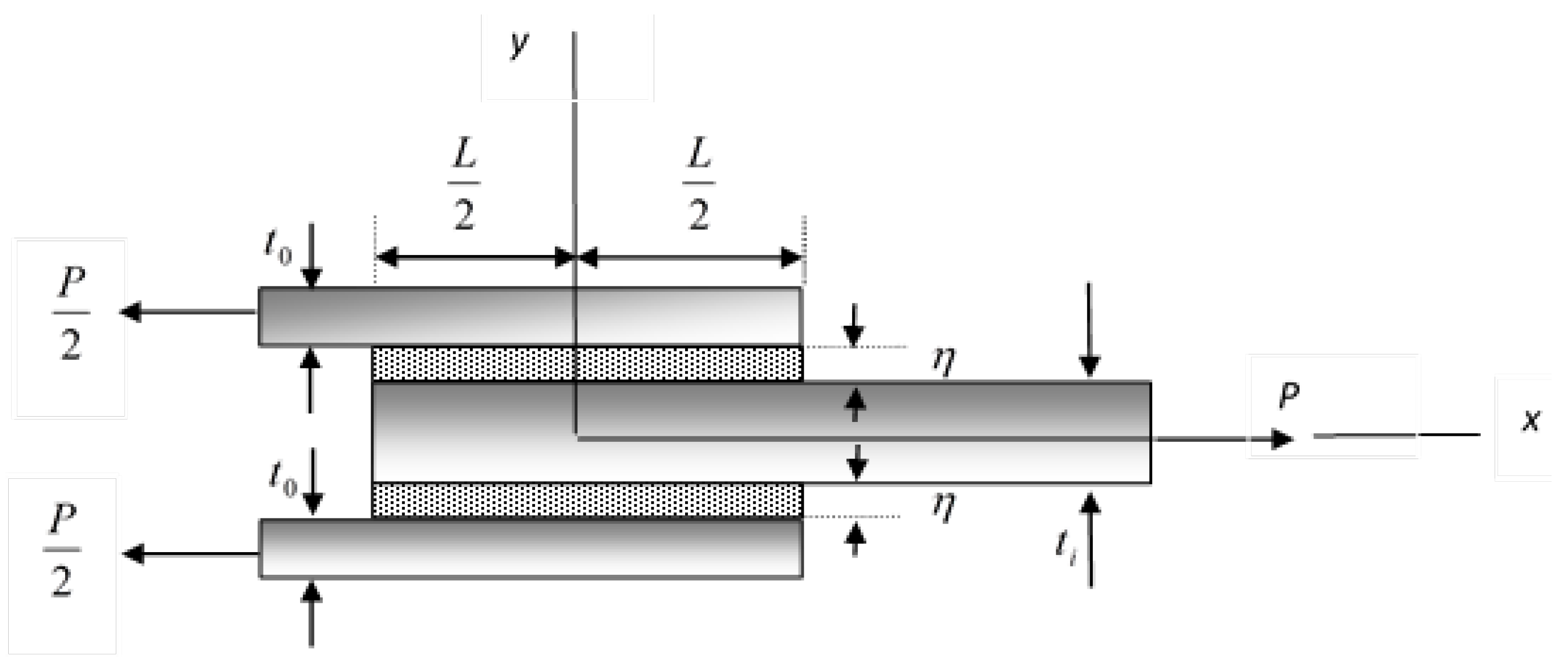


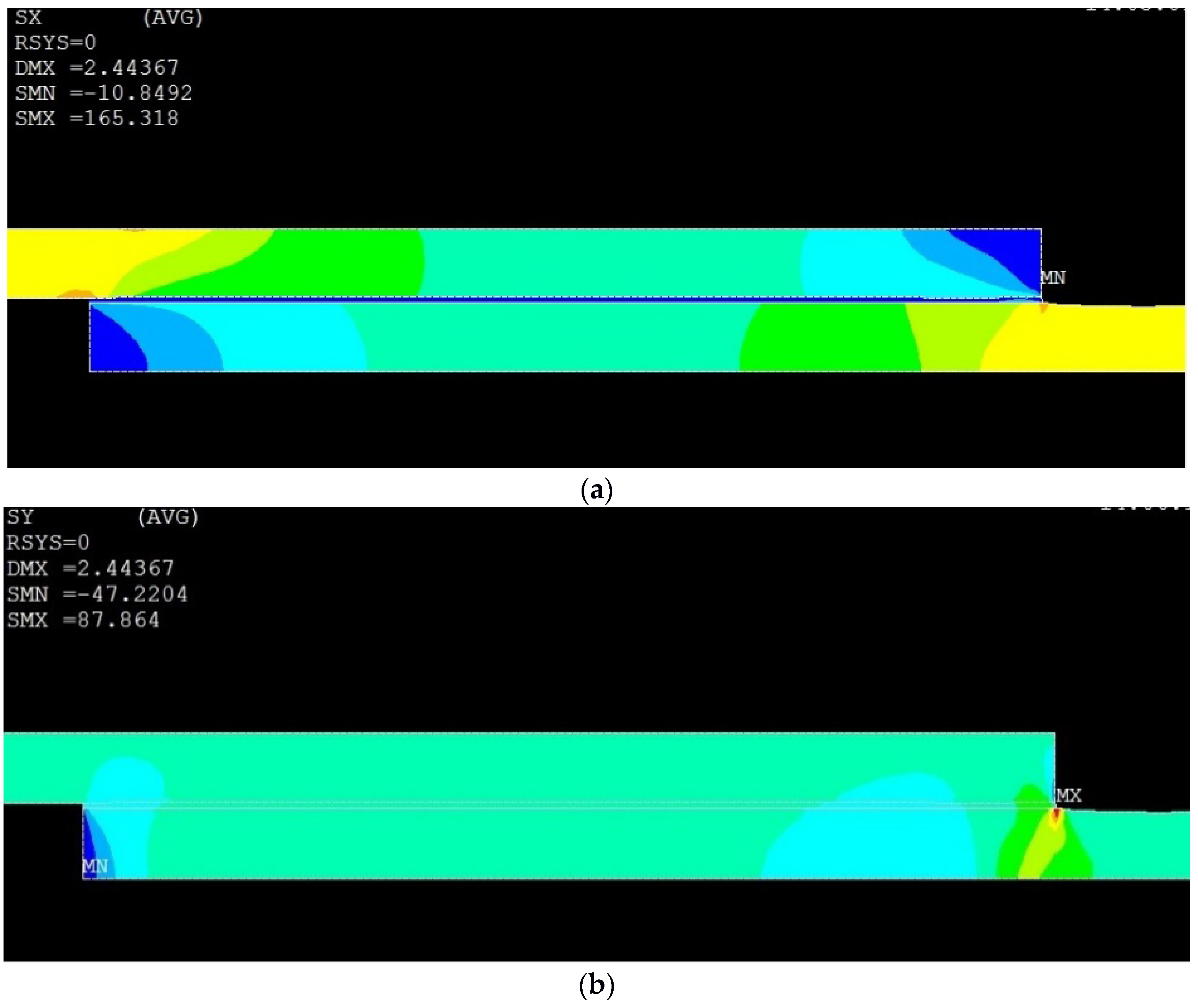
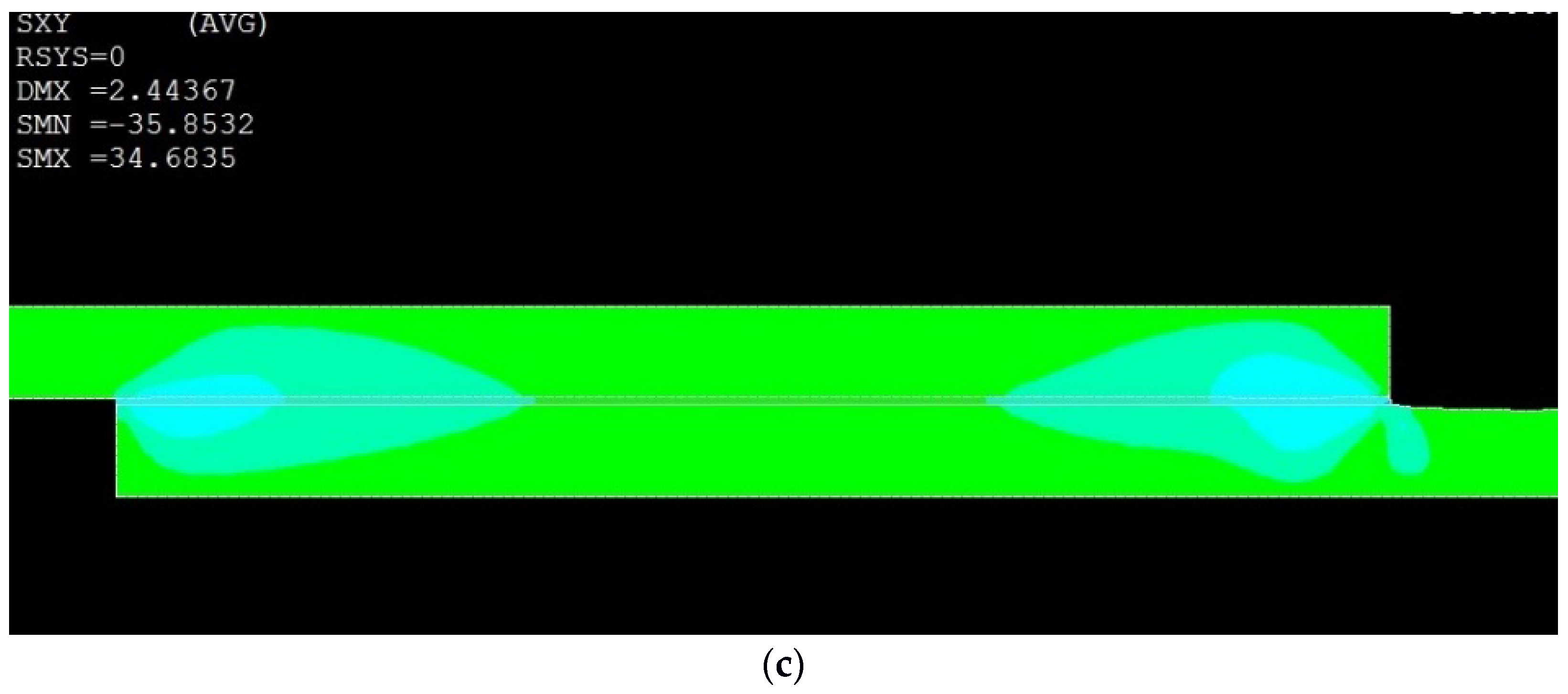
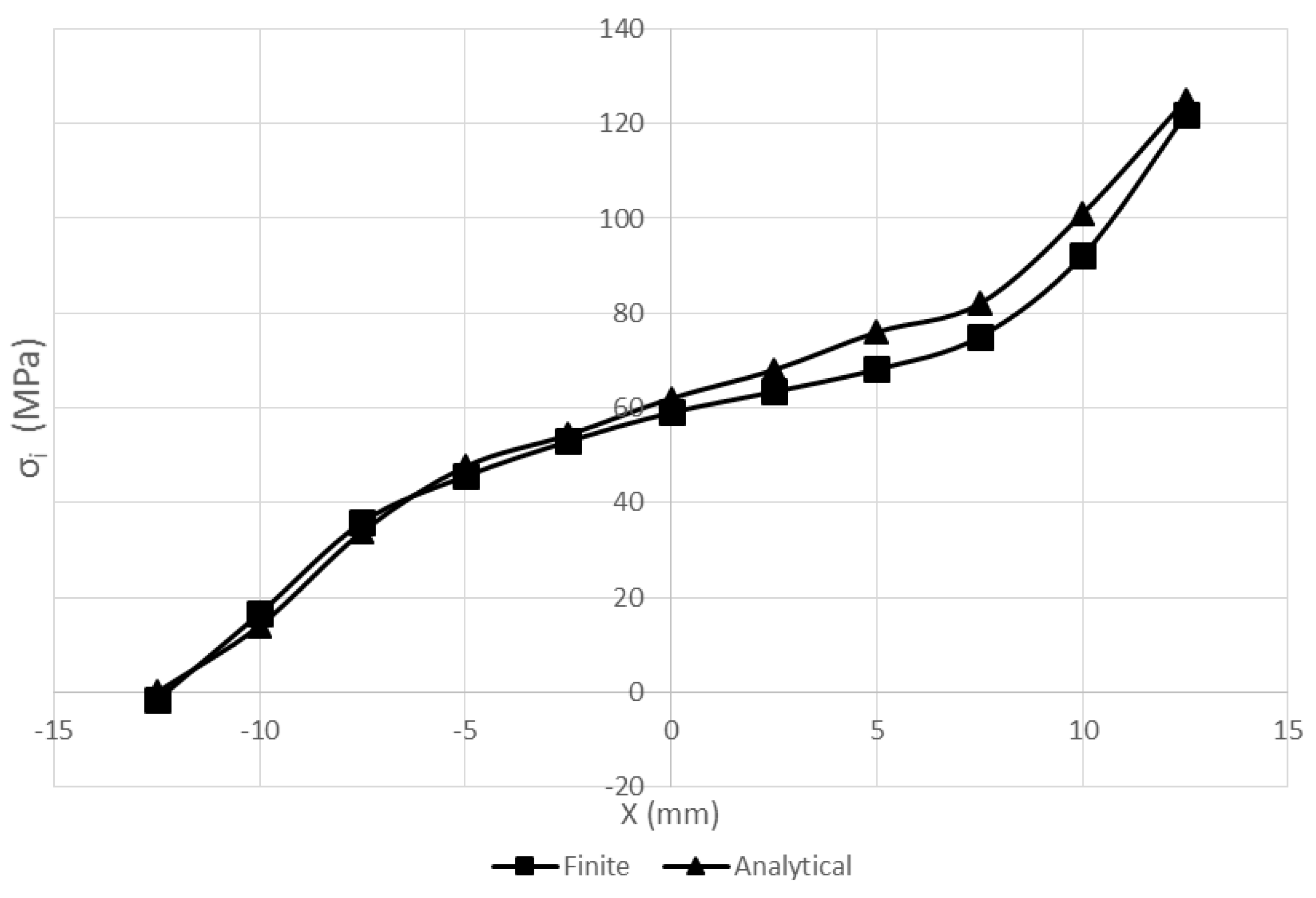

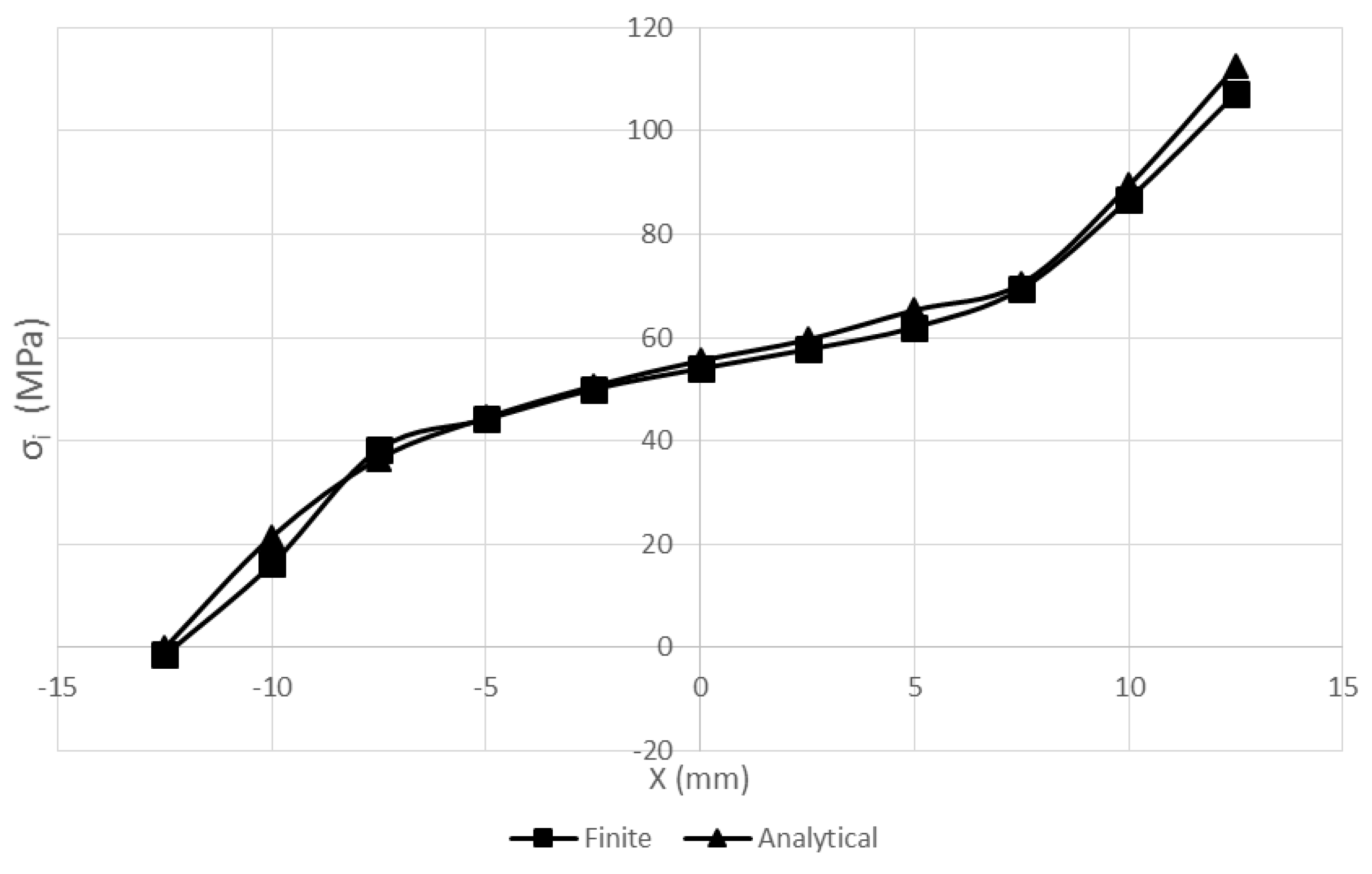

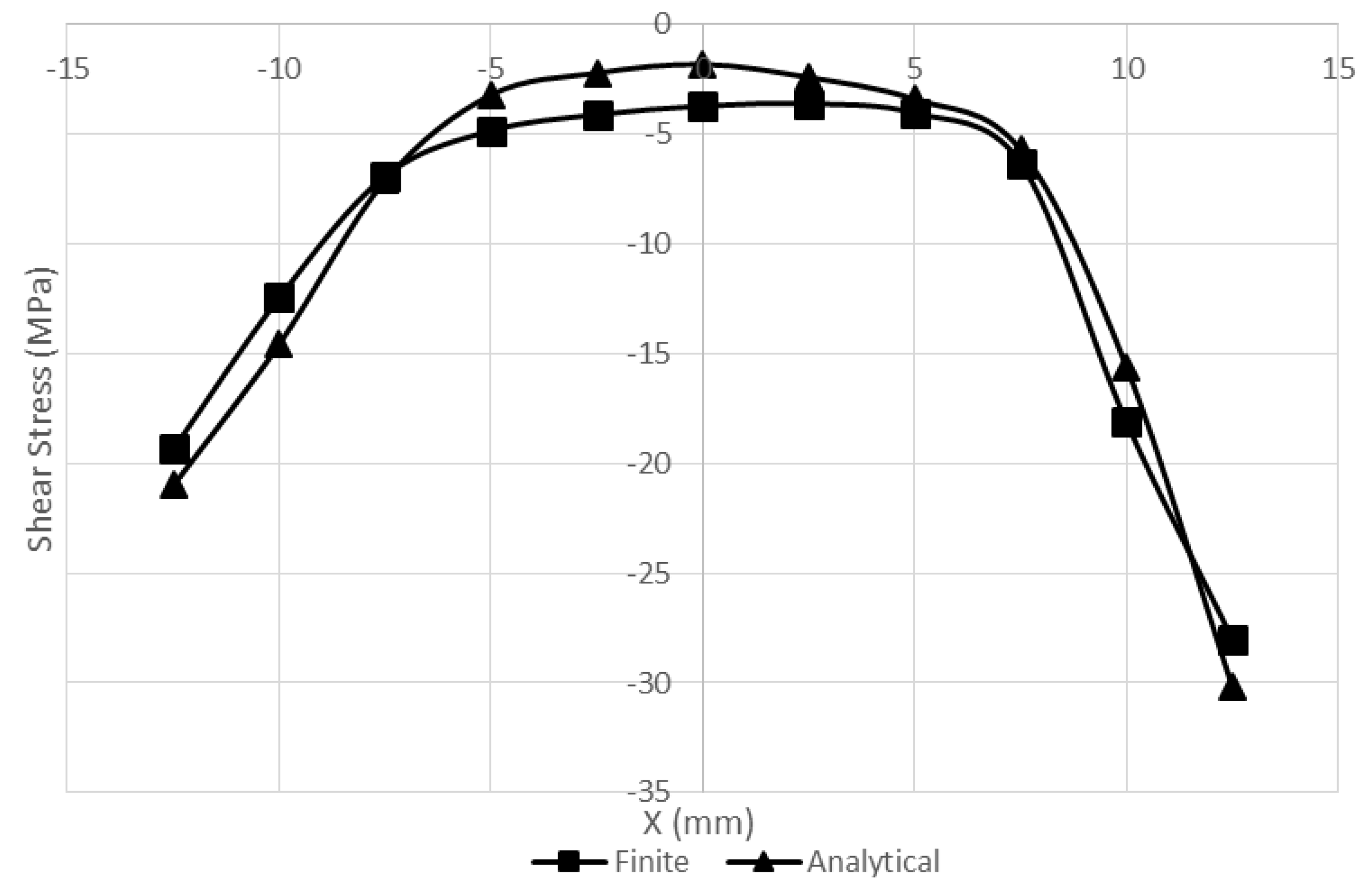
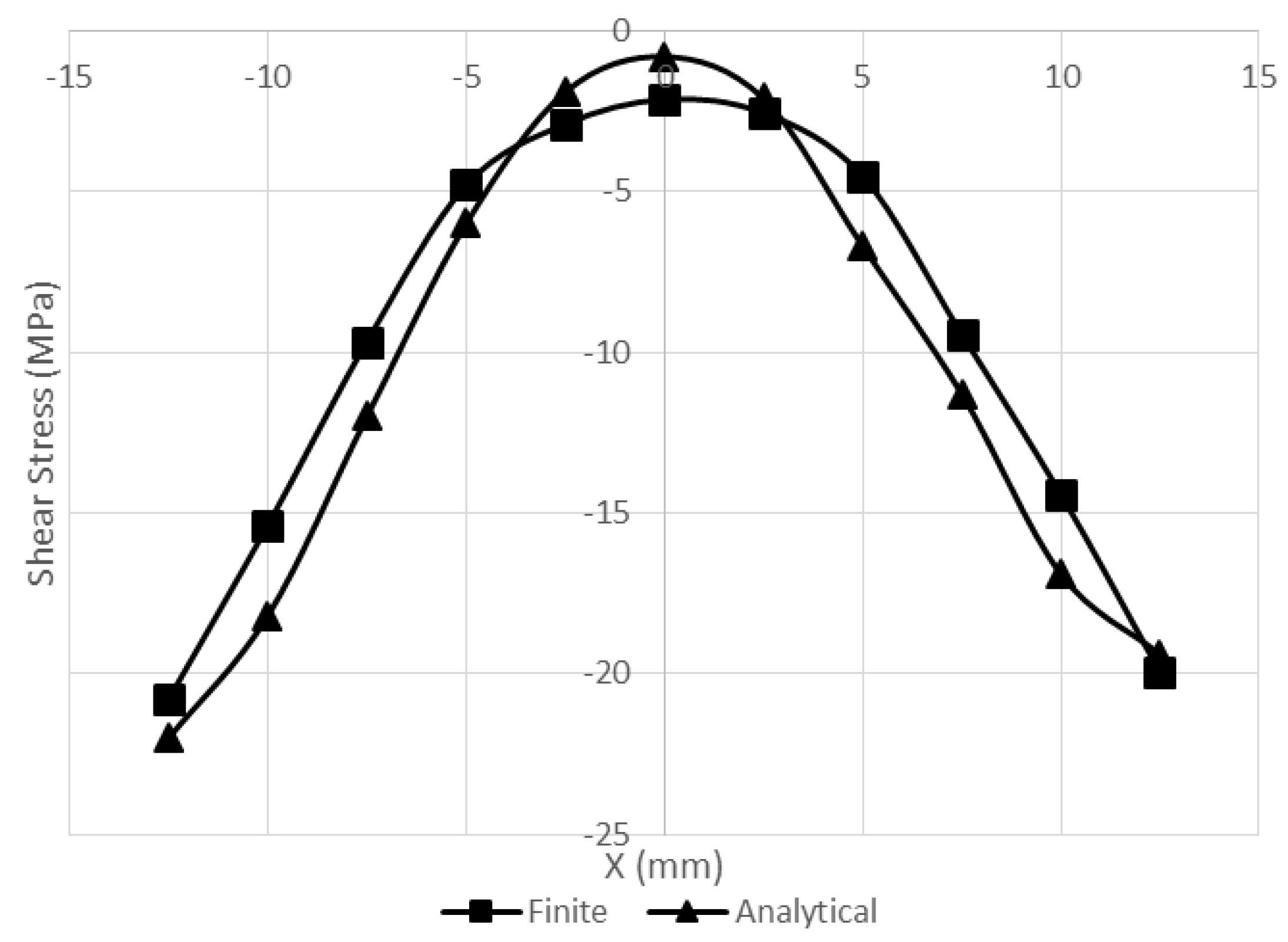
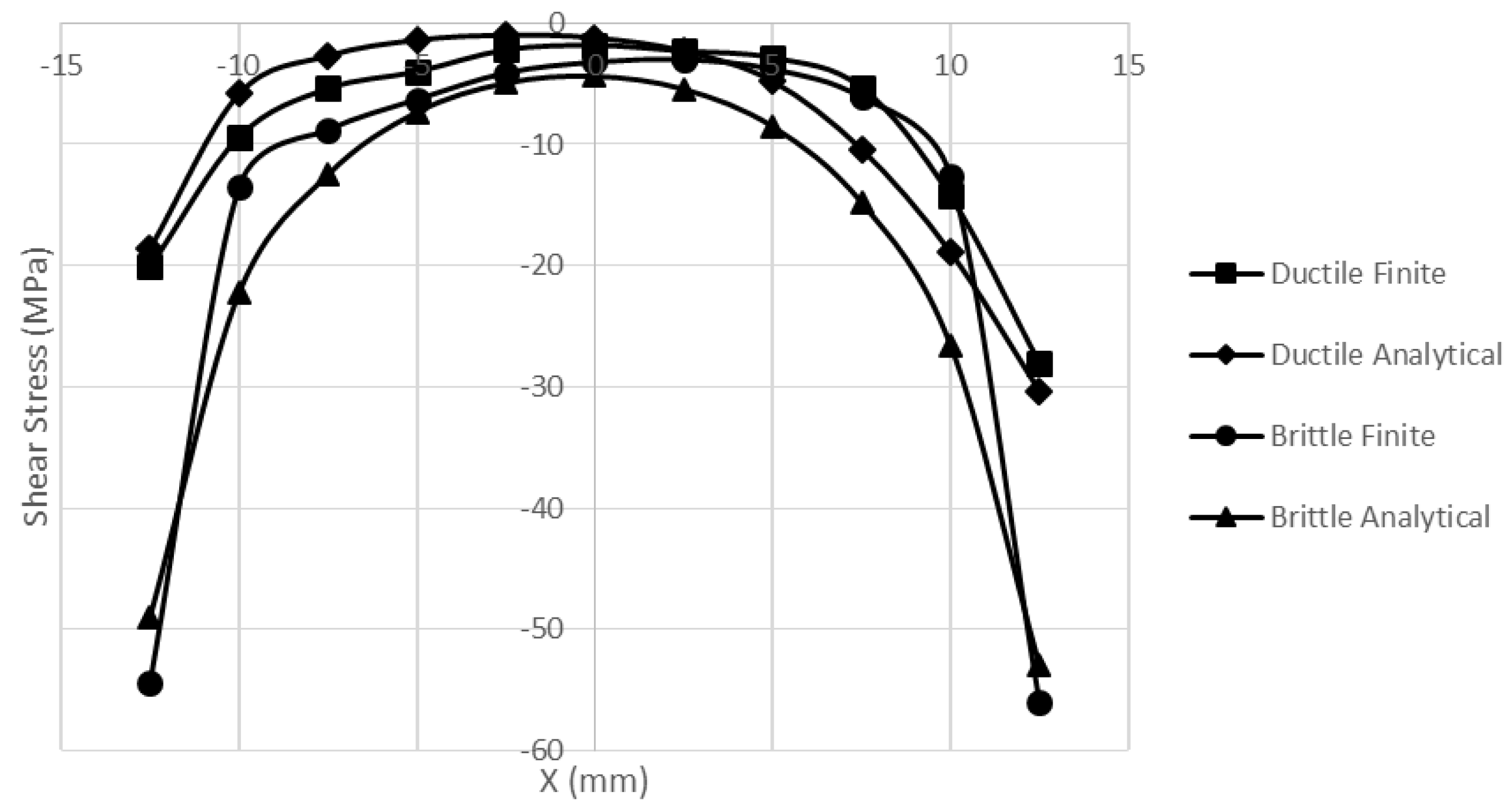
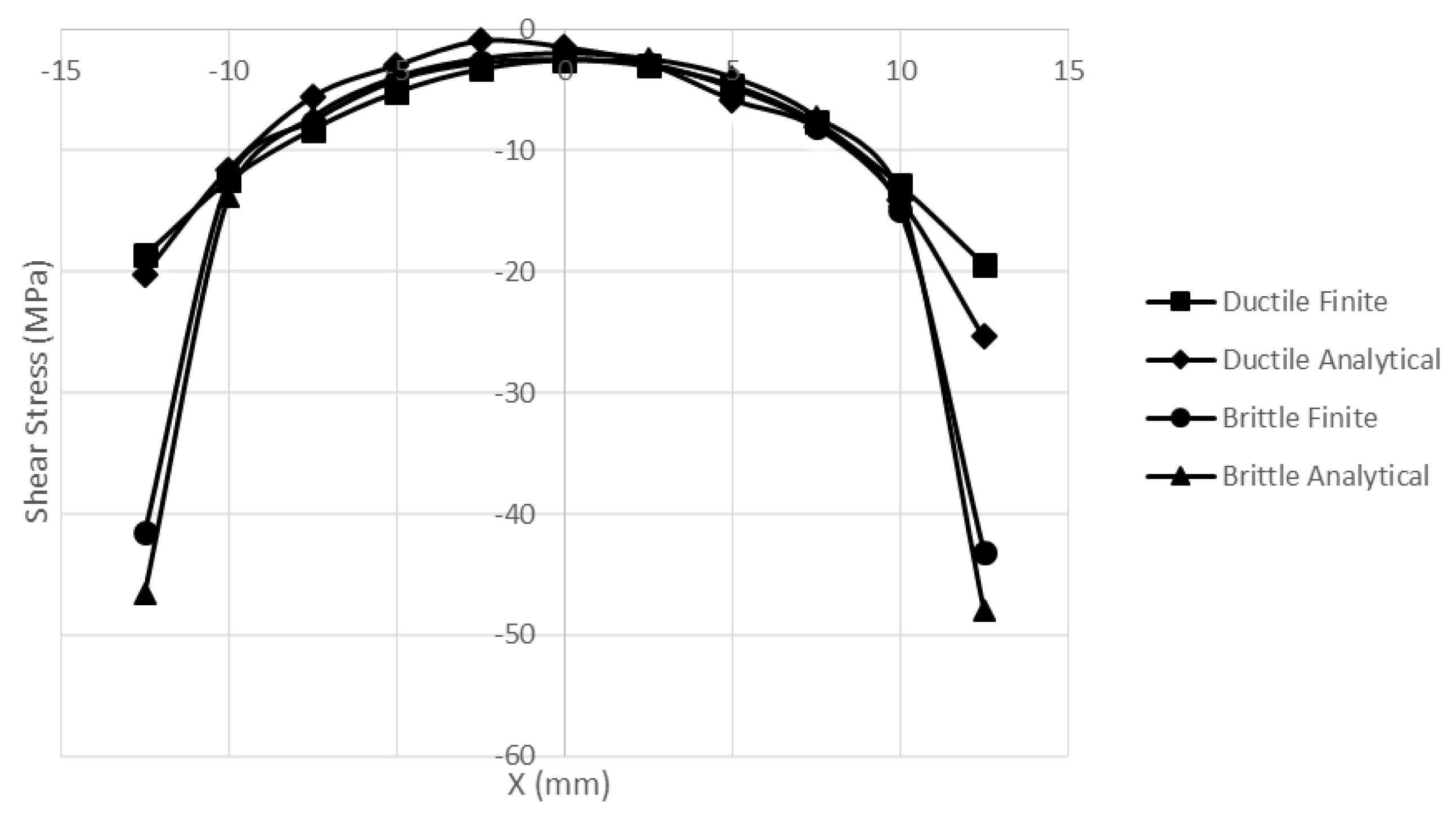
| E (MPa) | (MPa) | K (MPa) | n | |
|---|---|---|---|---|
| 1700 | 0.36 | 34 | 81 | 0.625 |
| E (MPa) | (MPa) | K (MPa) | n | ||
|---|---|---|---|---|---|
| Outer Adherend | 73000 | 0.33 | 325 | 520 | 0.610 |
| Inner Adherend | 71000 | 0.33 | 101 | 510 | 0.505 |
| E (MPa) | (MPa) | |
|---|---|---|
| 1720 | 0.35 | 34 |
© 2016 by the authors; licensee MDPI, Basel, Switzerland. This article is an open access article distributed under the terms and conditions of the Creative Commons by Attribution (CC-BY) license (http://creativecommons.org/licenses/by/4.0/).
Share and Cite
Akdag, M.; Batar, T.; Okumus, F.; Sayman, O.; Arikan, V. Elasto-Plastic Stress Analysis in a Ductile Adhesive & Aluminum Adherends. Math. Comput. Appl. 2016, 21, 5. https://doi.org/10.3390/mca21010005
Akdag M, Batar T, Okumus F, Sayman O, Arikan V. Elasto-Plastic Stress Analysis in a Ductile Adhesive & Aluminum Adherends. Mathematical and Computational Applications. 2016; 21(1):5. https://doi.org/10.3390/mca21010005
Chicago/Turabian StyleAkdag, Mustafa, Turan Batar, Fuat Okumus, Onur Sayman, and Volkan Arikan. 2016. "Elasto-Plastic Stress Analysis in a Ductile Adhesive & Aluminum Adherends" Mathematical and Computational Applications 21, no. 1: 5. https://doi.org/10.3390/mca21010005
APA StyleAkdag, M., Batar, T., Okumus, F., Sayman, O., & Arikan, V. (2016). Elasto-Plastic Stress Analysis in a Ductile Adhesive & Aluminum Adherends. Mathematical and Computational Applications, 21(1), 5. https://doi.org/10.3390/mca21010005





